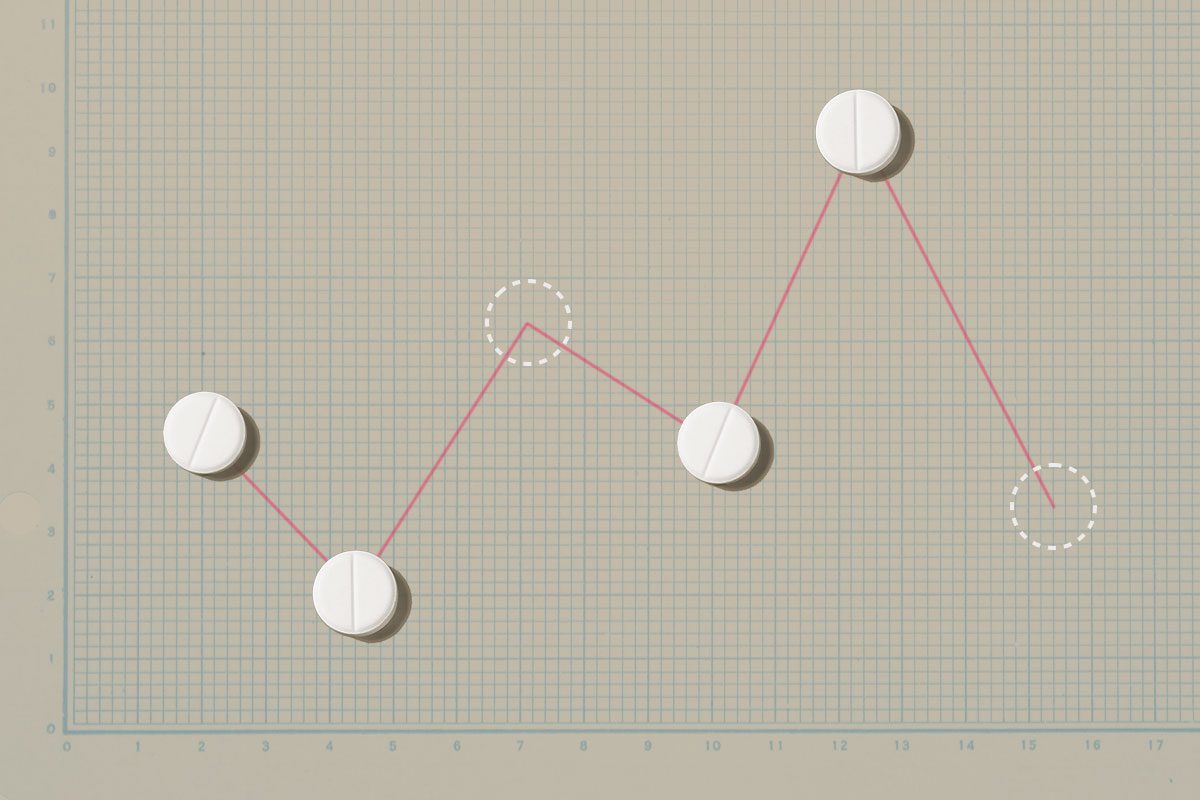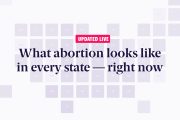We’re answering the “how” and “why” of abortion news. Subscribe to our daily newsletter.
Collecting abortion data has always been difficult: People are often unwilling to share their experiences with researchers, and the United States has no centralized count of abortions performed. Every state collects data differently, and some refuse to share it with federal researchers due to privacy concerns. Sometimes researchers have to estimate abortion incidence based on historical trends because up-to-date data isn’t available.
It’s a challenge with broad implications for information on reproductive health, one that has been compounded by the Supreme Court’s decision in Dobbs vs. Jackson Women’s Health Organization, which allowed states to ban abortion. Less accurate abortion data means less information to share with policymakers about the impacts of restrictions — but also spills over into many areas of public health.
Abortion data is a key supplement to studies involving the rate of pregnancies. Incomplete data on abortions could lead to less accurate calculations on the failure rates of various contraceptives and less knowledge about who gets pregnant. It could also lead to less information about the kind of reproductive support people need.
There are two long-running major national abortion data-gathering efforts in the United States: the Centers for Disease Control and Prevention’s Abortion Surveillance Report, which began collecting data in 1969, and the Guttmacher Institute’s Abortion Provider Survey, which began data collection in 1973. Additionally a pop-up survey launched in April 2022 by the Society for Family Planning, called WeCount, is expected to provide abortion data through one year after the Dobbs verdict.
With these three surveys, the major trade-off is whether researchers want timely data or demographically rich data. WeCount tracks abortions in each state every month, but that’s the only information the researchers collect from facilities. The CDC and Guttmacher gather that information — plus valuable demographic data including patients’ ages or race as well as what type of abortions were provided.
Isaac Maddow-Zimet, senior research associate at the Guttmacher Institute, explained that the reason there are so few data sources is because it is incredibly difficult to ask people about abortion directly. Regardless of whether surveys are conducted in-person or online, many people do not report that they have had an abortion.
-
Explore Our Dashboard:
-
Explore Our Dashboard: What abortion looks like in every state — right now
The organizations gather data in significantly different ways, but all three rely on data from facilities versus individuals. Guttmacher has compared nationally representative surveys asking people if they have had abortions to the numbers reported in its Abortion Provider Census.
“We find that there’s really, really significant levels of underreporting to the point where really, most survey data on abortion is is not useful, which is a real challenge because that’s a lot of how social science researchers collect data,” said Maddow-Zimet. As abortion access is restricted, more and more people will also seek abortions outside of a facility, which is difficult to track. The added risk of penalties means that people are less willing to share their abortion experiences with researchers.
“The problem of how difficult it is to measure abortion in surveys I would only expect to get worse post-Dobbs,” said Maddow-Zimet.
Guttmacher has also periodically run its Abortion Patient Survey, which last collected data in 2014. This survey is used to gather socioeconomic information about patients, not provide an estimate of abortion incidence in the United States.
The CDC aggregates data reported by certain states and cities. Sharing information is voluntary, and notably California, Maryland and New Hampshire do not provide data to the CDC. The CDC estimates that those three states account for 20 percent of all abortions, limiting the accuracy of its report.
In a statement to The 19th, the CDC said that it was too early to see how the Dobbs verdict would affect its abortion surveillance system but that it would track potential impacts on maternal and infant health and data collection.
Not all health agencies process data the same way the CDC does, which leads to less complete information about who gets abortions and what kinds of procedures are performed. Many people also travel for abortions, so data gathered on a state level may not accurately represent where people who get abortions actually live.
The Guttmacher Institute reaches out to every facility in the United States that provides abortions to collect data about what sort of services they have provided and to whom. Guttmacher reached out to 2,131 facilities for its most recent report and determined only 1,687 performed abortions during the data collection period. Of those, a little under half shared data with the research team. Researchers also collect data from health departments to get the most complete data set possible and to aid in estimates from facilities who do not complete the questionnaire.
When facilities close due to bans or stop providing abortions, Guttmacher makes an effort to reach out to former employees to collect data. With the number of clinics closed after the Dobbs ruling, that will continue to be a challenge — but not the predominant one.
Due to the time-consuming nature of gathering data, reports are released on a two-year delay. The most recent reports from the CDC and Guttmacher were released in November and summarized data from 2020 and 2019-2020 respectively.
Abortion data collection takes so long because of both the manual collection process — Guttmacher reports that their staff made over 7,000 calls, emails and faxes trying to chase down information — and necessary security measures researchers need to take when working with protected health information. The need for security is especially intensified because of the threats made to abortion providers and the increased penalties around abortions.
Because of these delays, it’s hard to know how the Dobbs verdict affects abortion on a national scale. WeCount jumped in last year to try to fill that gap.
While it may lack data other than how many abortions were performed and so not be as rich as researchers and policy advocates (and journalists) may have hoped, WeCount’s information can provide a timely snapshot of how rapidly changing policies affected access to health care state-by-state.
But not all abortions are captured in facilities data. There is no way to track the number of self-managed abortions, or abortions completed outside of facilities. This includes people who order abortion pills online or terminate pregnancies through other methods.
With 13 states banning abortion and others fighting to restrict it, the number of self-managed abortions has likely risen. Abigail Aiken is a professor at University of Texas at Austin who has studied the change in orders from Aid Access, a Austrian organization that ships abortion pills to all American states, regardless of legality.
”Our work so far, if you look at it kind of as a whole, has shown that every time a state does something to restrict abortion, you see people look for self-managed abortion more frequently,” Aiken said. “So when in-clinic access goes down, self-managed abortion requests go up.”
A research paper published by Aiken and her collaborators in November showed that in the 30 states where Aid Access operates outside of formal health care settings, requests rose both after the leak of the Dobbs verdict in May 2022 and after the official verdict in June. Aiken said that this data shows that people are getting around abortion restrictions. “So if the intent of these laws is to stop all abortions, that’s not happening.”
But there’s no way to see how many of those prescriptions were actually used for a self-managed abortion, or whether a pregnancy was terminated. Patients may have changed their mind and ended up seeking care at a clinic, or not getting an abortion at all.
There isn’t a way to count the number of all self-managed abortions, but looking at data from Aid Access can give a window into the self-management space, Aiken said. Many people obtain medical abortions via different methods, or travel across borders to access care. While excluded from the November study, some people order pills from Aid Access in case they need them for a future pregnancy.
Self-managed abortions are extremely private, Aiken said. The privacy and safety of research participants, as self-management is increasingly criminalized, has always been paramount. “But post-Dobbs, I think we’ve become even more sensitive to the way that the winds are blowing,” she said.
“In terms of holding policy makers accountable, I think it’s very important that these data are collected, and that the numbers are disseminated to the public and to those with the power to affect laws and policies,” Aiken said. “Because I think oftentimes, people get so politically entrenched, and certainly politicians do, that they sort of enact a policy or they celebrate the overturn of Roe, and then sort of forget about the fact that then people are gonna have to live with the consequences of this.”
In addition to obscuring the real effects of abortion policy on peoples’ lives, less accurate data on abortions cascades into other areas of public health research, especially when pregnancy is involved.
“If you are just capturing pregnancies that end in birth, then you are missing a big piece of the pregnancies that occur,” Maddow-Zimet said.
Guttmacher uses data from its Abortion Patient Survey to calculate contraceptive failure rates for “typical” use. Clinical trials often report rates based on “perfect” use — and understanding how well contraceptives work when actual people are using them is important when patients are making decisions about what method to use.
Demographic data about who gets abortions can help shape decisions around who gets which resources. “Understanding the characteristics of people who have abortions and the resources needed by those folks and ways to offer them support and ways to increase access — all of that relies on accurate data,” said Maddow-Zimet.
Guttmacher is also exploring different ways to study abortion in the United States. The think tank conducts reproductive research globally, including in places where abortion has been banned or has a major stigma, and it is looking into applying methodologies it uses other places domestically. One method extrapolates from the number of people who seek medical attention after self-managing abortion.
“Those data, kind of by necessity, are never going to be as reliable as administrative data or surveys of facilities themselves,” said Maddow-Zimet.
Even though abortion researchers have struggled to collect data for decades, the Dobbs verdict will make data collection more difficult in the United States. Beyond public health implications, it affects how we think about people’s reproductive lives, said Maddow-Zimet. “And it’s a real loss when we’re missing information on that important thing that that people experience.”







